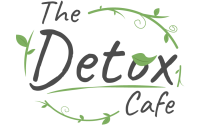While many people enjoy the lavish and free lifestyle of going free-form with their diet plans and always choosing whatever suits their taste buds the best, there’s no denying that being picky with your food is the smart and sustainable option if you plan on living clean and healthy. And especially given the indirect repercussions of eating countless ounces of meat per week, more and more households are looking to the possibility of eating more plant-based alternatives.
However, we also can’t deny the fact that not too many people are fond of the idea of getting rid of all things meat in their diet because some do end up craving after the taste, and while veganism and vegetarian options carry numerous benefits, sustainability becomes your worst nightmare. As a result, the flexitarian diet trend has been slowly gaining momentum and popularity, which begs the question of whether this new up-and-coming star is a legitimate way of planning your meals or yet another fad destined to crash and burn?
Operates On The Same Principles But More Flexible
Not so surprisingly, the term flexitarian is a combination of the words flexible and vegetarian. As the name suggests, it operates much like any other vegetarian diet but is more flexible in terms of animal by-products and meat consumption. In essence, you’ll still be heavily emphasizing consuming vegetables, fruits, and all things plant-based for your main diet; however, you’re still more than welcome to enjoy a serving of sweet and sour chicken now and then.
- Meat Is Still Part Of Your Diet: Normally, any other vegetarian diet will have you eating everything plant-based and receiving all of your protein from food like tofu, edamame, almonds, and soy, just to name a few. And, on rare occasions, some vegetarians will allow the consumption of animal by-products like eggs and dairy. In contrast, a flexitarian diet still allows meat in your meals but encourages limiting consumption and focus more on plant-based alternatives.
- Varies From Person To Person: In addition to meat still being part of your diet, a flexitarian approach to meal planning and lifestyle can vary from person to person, depending on their perceived level of tolerance. For example, beginners can start by cutting down their meat portions to only 12 meals a week; wherein veterans can go for as little as 2-4 meals per week. The idea is to actively work down your meat consumption but not completely erase it from your diet to keep things sustainable.
What Does A Week’s Worth Of Meal Planning Look Like?

Like any other plant-based heavy diet, a week’s worth of flexitarian meal planning will look very semi-vegetarian, meaning that small amounts of meat, poultry, fish, and seafood are still on the menu. Namely, you can expect to (1) load up on your fruits and vegetables, (2) leaning towards plant-based protein, (3) incorporating meat only as a balance, and (4) strictly avoiding processed food as much as possible.
- Load Up On Fruits And Vegetables: Since flexitarian diets are still based on vegetarian diets, loading up on fruits and vegetables as your primary food source is the natural first step. So, don’t shy away from your apples, oranges, and all your beautiful greens like broccoli, kale, and spinach. Of course, feel free to mix, match, combine, and spice up your meals whichever way you see fit.
- Always Prefer Plant-Based Protein: Besides fruits and veggies, lack of protein and other nutrients like omega-3 fatty acid is a common drawback with plant-based diets. However, we’ve made a lot of progress with plant-based protein, and you’ll find plenty of options from vegan bean burgers and plenty of tofu as your substitutes. So, before you get worried about bulking up and building your arms, rest assured there’s a lot of protein going around, even in the greens.
- Incorporate Meat As A Balance: As we’ve mentioned above, meat is still part of your diet, but you want to actively limit your consumption of meat and stick only to free-range and grass-fed as much as possible. Therefore, instead of using meat as the main source for all your nutrients, think of it as a mere balance, something to keep you from stuffing yourself full.
- Strictly Avoid Processed Food: Last but not least, never forget that processed food is a complete no-go, and while some flexitarians do allow little bits to slip through, you’ll want to avoid them. You see, these processed food options are just overflowing with added sugar and offer zero nutrients at all, which will only mess up your diet. What’s worse, one bad day could ruin your entire week’s worth of progress!
Start Small And Work Out Your Portions!
In conclusion, flexitarian diets are becoming popular because they work and offer a more sustainable approach toward eating healthy, cutting down on food costs, and saving you that trip to the urgent care clinic for stomach problems. So, be sure to start small and work out your meat portions to keep things steady.


